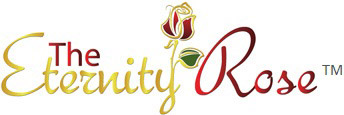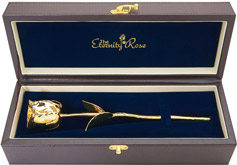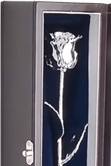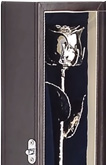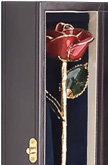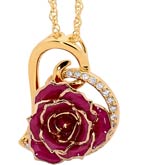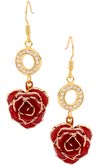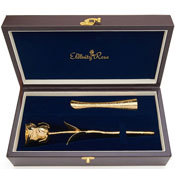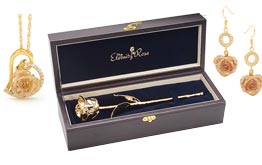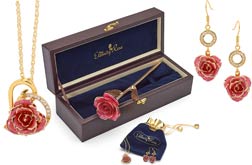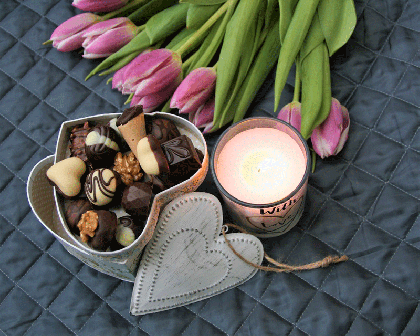How Sweet It Is: When Chocolate Became The Best Valentine’s Day Gift
If you’re giving chocolate as a gift this Valentine’s Day, you might wonder what the history is behind Valentine’s Day Chocolate. Read on to learn more!
Chocolate.
The quintessential Valentine's Day gift. When you give a girl a bouquet of red roses and a box of Valentine's Day chocolate, she knows how much you care.
People have been delighting their lovers with gifts for Valentine's Day since the late 1300s when Geoffrey Chaucer linked the ancient holiday to romance and love in a poem.
But when did chocolate enter the mix? Who started the tradition and why do chocolate and romance seem to go together so well?
Many traditions evolve over a period of years, even hundreds of years. Some of them start out looking quite different than the way we celebrate them today.
Come with us as we trace the evolution of Valentine's Day chocolate through the ages.
The Mayans and Aztecs
For ancient civilizations that were supposedly barbaric and backward, the Mayans and Aztecs got a lot of stuff right.
As a culture, the Mayans had an appreciation for drinking chocolate. Their recipe, which consisted of mixing cacao paste with cornmeal, chilies, and water, might not be considered delicious today, but they certainly loved it.
It became a special drink that they enjoyed at the end of feasts and during religious ceremonies. They also appear to have been the first culture to connect love with chocolate, using it as a ceremonial rite during weddings.
Their neighbors, the Aztecs, also developed a taste for the bitter delight (no sugar back then) and traded with the Mayans to obtain it.
Legend has it that Aztec ruler Montezuma II drank boatloads of the stuff to perk up his libido.
But before you go gorging on chocolates as an aphrodisiac, know that science hasn't found a significant link between eating chocolate and sensual desire.
The Spanish Explorers
The "civilized" world came into contact with chocolate when the Spanish explorers brought it back from Central America in the 16th century.
Rather than chilies and cornmeal, they mixed their cacao paste with cinnamon and cane sugar. This made a delightful treat a few steps closer to what we enjoy today.
As you can imagine, bringing it by ship back from Central America was no small feat.
On top of that, sugar had to be shipped from India or Central America. Thus, chocolate was so expensive for the next few hundred years in Europe that only the wealthy could afford it.
The Victorian Age
Fast forward a few hundred years to the Victorian age. In the 1800s, sugar was an easier commodity to get a hold of and chocolate was getting more delicious...and more popular.
However, in those days, chocolate was still a drink. Nobody was eating chocolate. Even though they were starting to add sugar, chocolate still wasn't a candy.
Richard Cadbury (does that name sound familiar?) was a leading chocolatier of the time. He invented a special process for creating a more palatable chocolate for drinking. This process left a byproduct, cocoa butter.
Waste not, want not. Looking for a way to use the byproduct, he landed on creating "eating chocolate". This was similar to the chocolate candies we know and love today.
Now, the Victorians were big on giving gifts for Valentine's Day. Songs, poetry, flowers, cards, and lots of cupid-decorated gifts were happily passed around each February.
Being the enterprising businessman that he was, Richard Cadbury decided to capitalize on the craze.
In 1861, he designed gorgeous, heart-shaped boxes for his "eating chocolates" that could be used to store mementos like love letters, pressed flowers, and other special gifts long after the chocolates were gone.
He decorated the boxes with cupids and rosebuds, popular Valentine's Day symbols.
Needless to say, his Valentine's Day "eating chocolates" were a big hit.
Coming to America
Near the turn of the century, Valentine's Day chocolates started taking off in America.
In 1894, caramel maker Milton Hershey (another familiar name) began covering his caramel candies with chocolate.
Then, in 1907, the famous Hershey's kiss was born.
Surprisingly, it got its name from the smooching sound the chocolate made during production. As a mass-produced candy, the popularity of this affordable chocolate spread like wildfire.
The Hershey's kiss remains popular to this day, but the king of boxed chocolates is Russell Stover.
The company began with Clara Stover wrapping "Bungalow Candies" in her kitchen in 1923. From there, she and her husband began opening factories and grew to be the #1 brand of boxed chocolates in the U.S.
To dress things up for Valentine's Day, they produced the "Secret Lace Heart" - a best selling box covered with satin and black lace.
Nicknamed the "lingerie box", it’s an affordable option that has been radically popular.
If you've never bought one before, you might consider checking it out this Valentine's Day.
A Perfect Pairing: Roses and Valentine's Day Chocolate
There you have it.
Giving Valentine's Day chocolate as a tradition has been a long time coming and every year, millions of people the world over take part.
Red roses have also become synonymous with romance, love, and Valentine's Day.
Now this year, when you go to buy red roses and chocolate for your lover, you'll know why!
The only sad thing about giving roses and Valentine's Day chocolate is that they don't last forever. So if you're looking for a gift as permanent as your love, why not a Red Glazed Eternity Rose?
Check it out today!








